“Trashi Choling” means “Glorious Dharma Place” or “Auspicious Dharma Place,” and Ritro means “a small temple in the wilderness.” This temple is affiliated with Sera Monastery and is a Gelug pa monastery of Tibetan Buddhism
It is located to the northeast of Pabonka, in the northern outskirts of Lhasa, built against a steep rock cliff. From the high mountain where Tashi Choling Ritro is situated, one can overlook Pabongka Ritro, and see the Potala Palace in a few kilometers
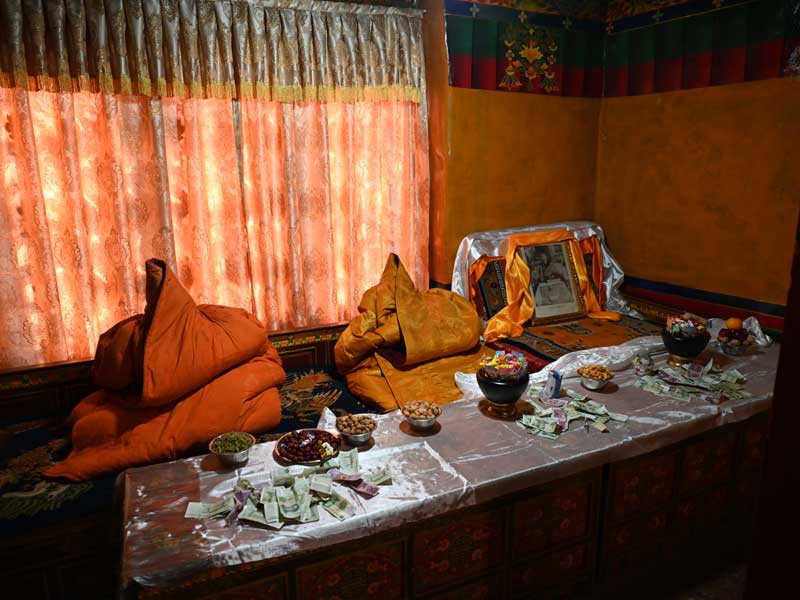
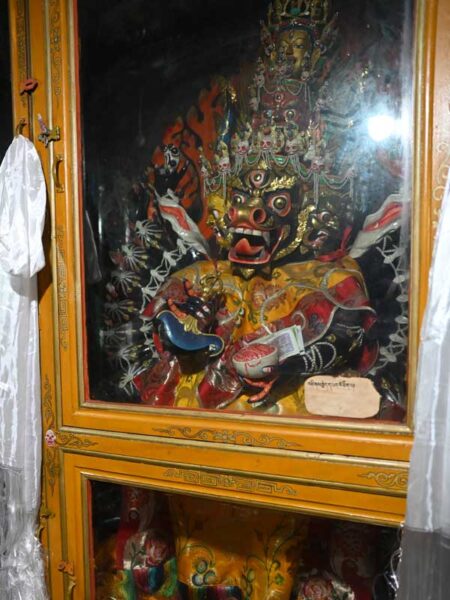
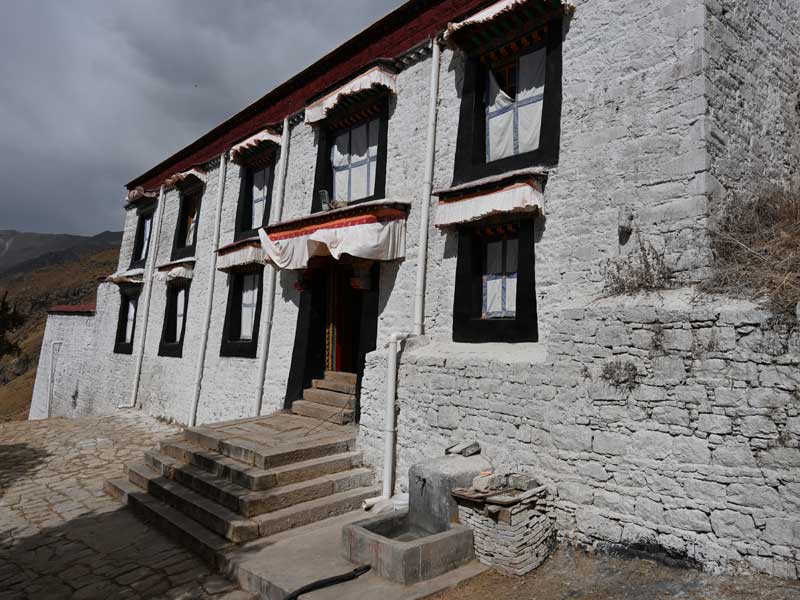
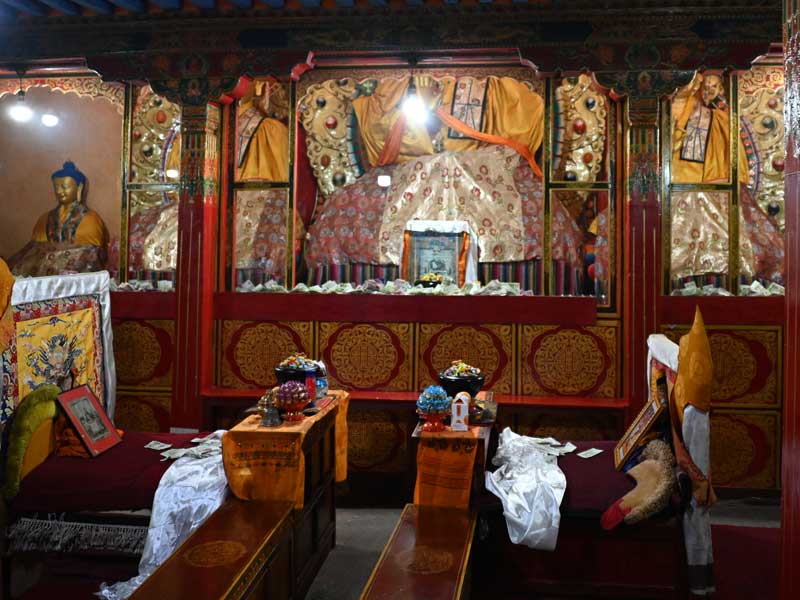
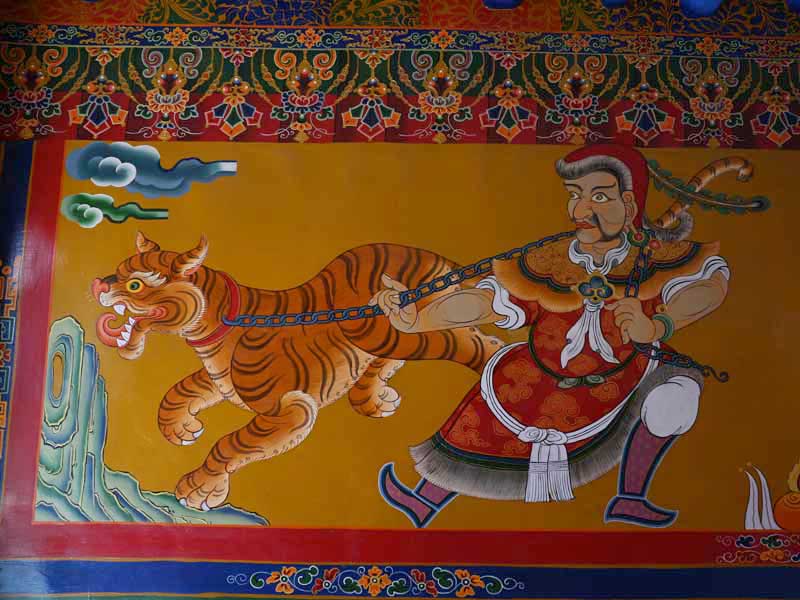
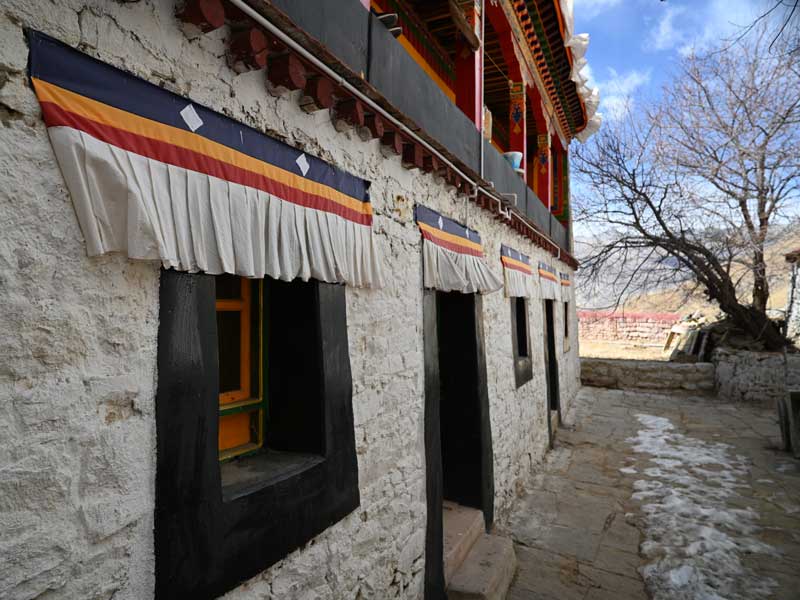
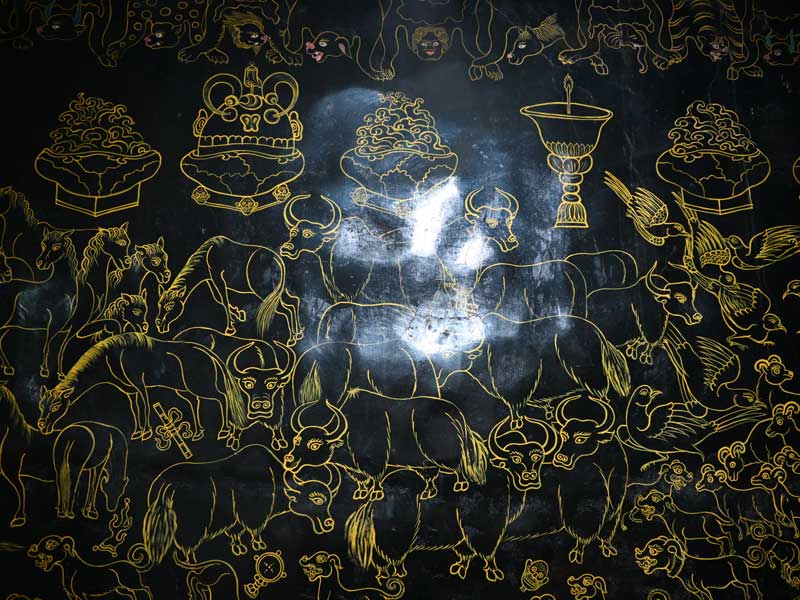
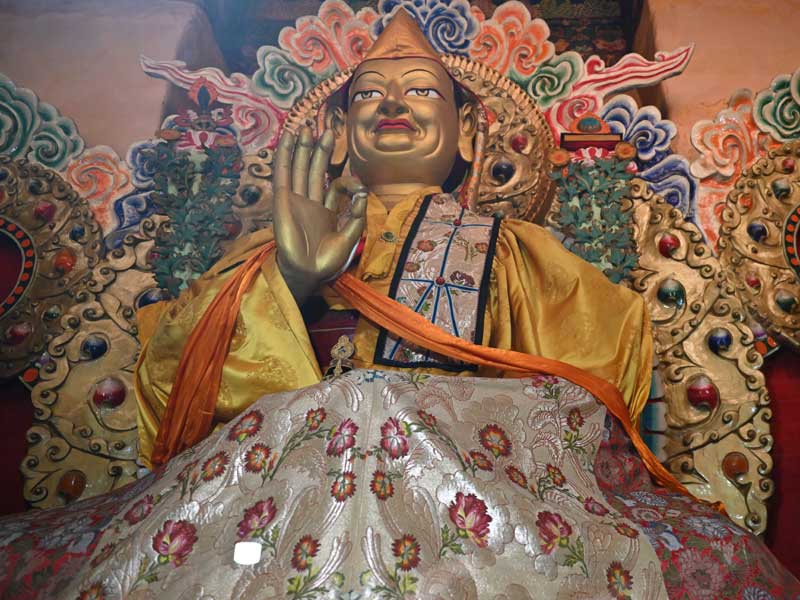
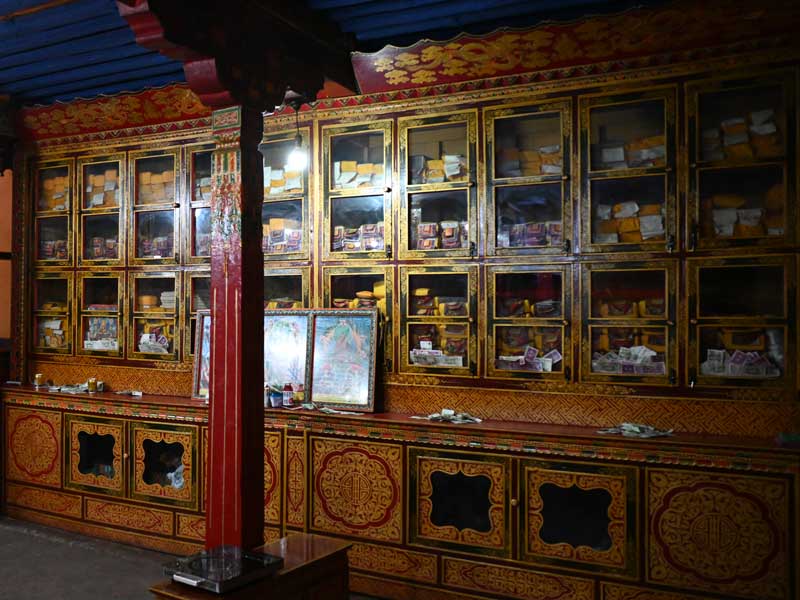
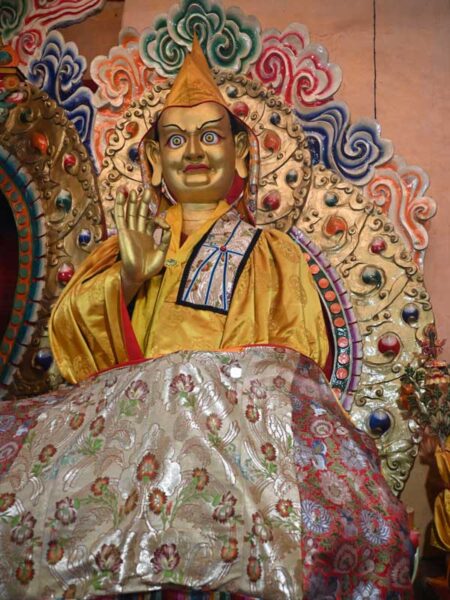
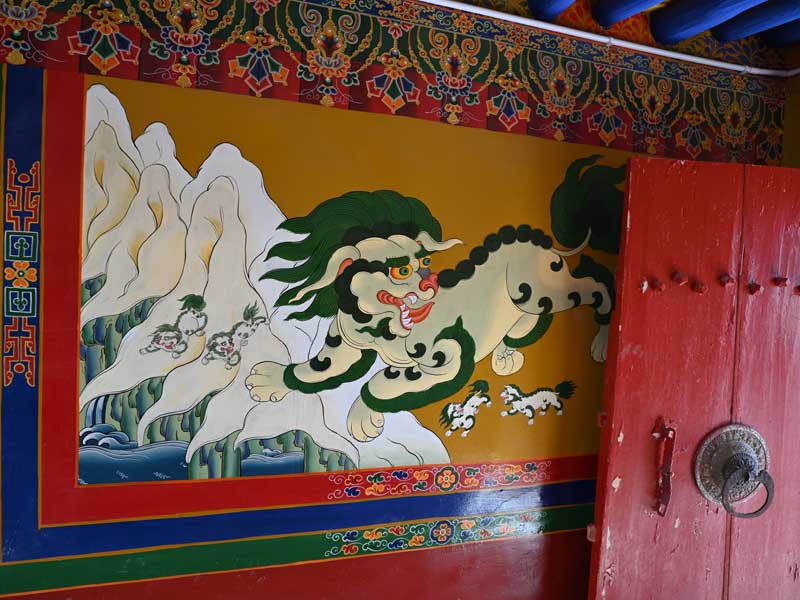
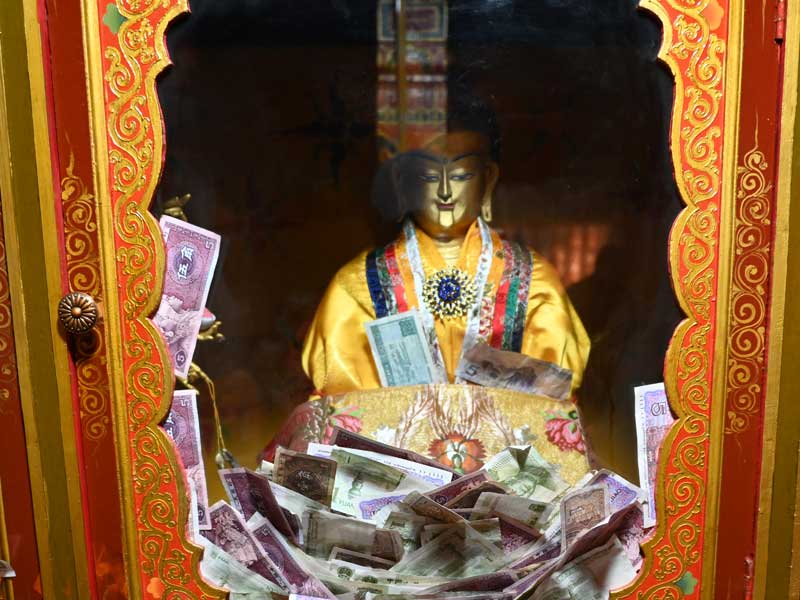
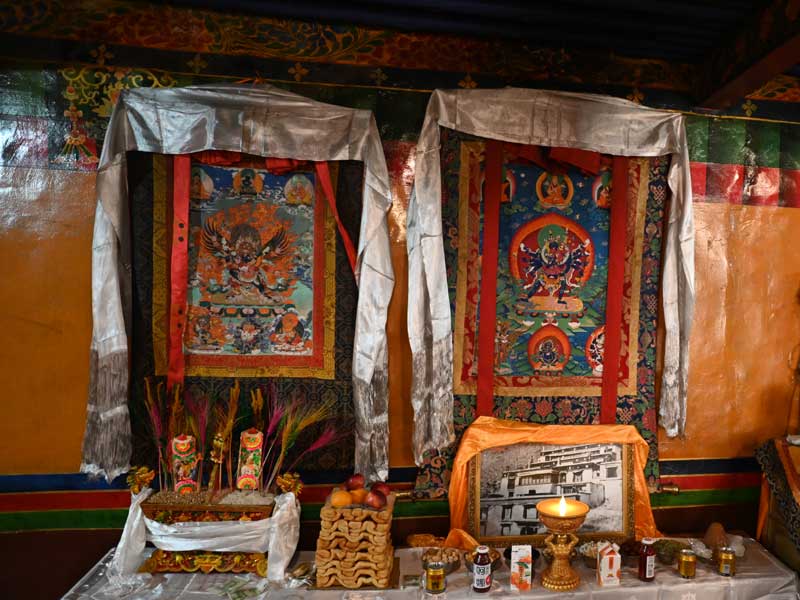
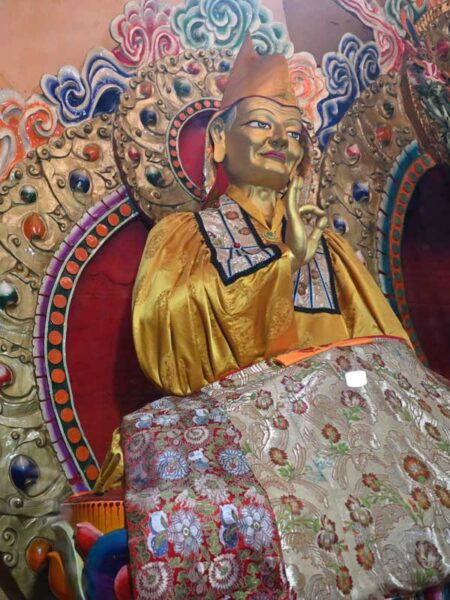
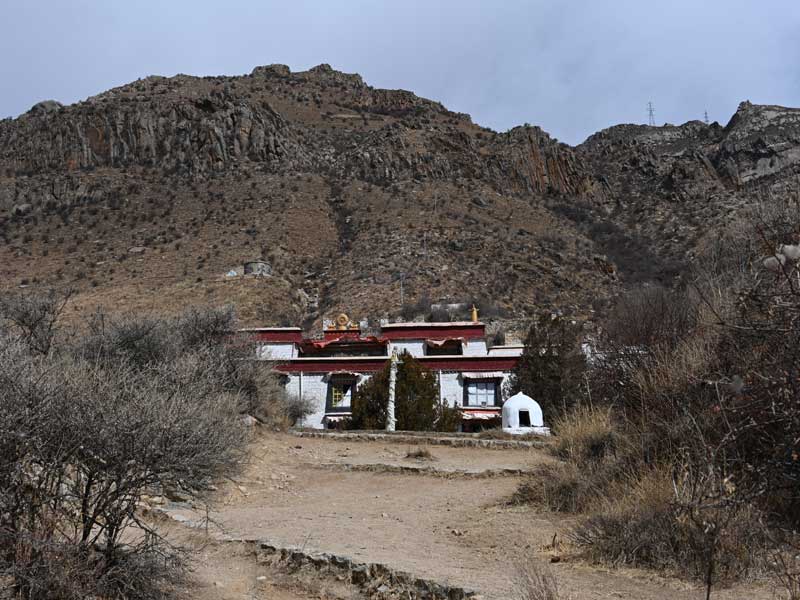
Introduction
Trashi Choling Ritro is situated in the mountains northwest of Sera Monastery, about 3 kilometers away. It takes about 1 to 1.5 hours to walk from Sera Monastery to Trashi Choling Ritro.
The construction date is unknown. Some scholars believe it may have been built by Songtsen Gampo, the Tibetan emperor, in the 7th century.
Other scholars suggest that Trashi Choling Ritro was used by Lazang Khan to house monks from his private Buddhist college during the winter months.
Historical records indicate that monks from Lazang Khan’s Buddhist college would gather in northern Tibet during summer and then move to the north of Lhasa for winter. Trashi Choling Ritro might have been their winter residence.
In 1705 AD, shortly after Lazang Khan took control of Tibet, he found Sera Monastery’s assembly hall too small to accommodate all the monks for religious ceremonies.
Lazang Khan proposed building a new assembly hall for Sera Monastery on the condition that the old hall be given to him for his private Buddhist college.
After reaching an agreement with the monks of Sera Monastery, this proposal was implemented.
In 1717 AD, after Lazang Khan’s death, his Buddhist college became the Tantric College of Sera Monastery, which continues to thrive to this day.
Although Lazang Khan’s college eventually moved to Sera Monastery, they did not abandon their old winter residence at Trashi Choling Ritro.
When Lazang Khan’s college became the Tantric College, the ownership of Trashi Choling Ritro transferred to the Tantric College of Sera Monastery.
In the early 20th century, Pabongka Rinpoche meditated in nearby caves, establishing a connection with Trashi Choling Ritro.
Later, as Pabongka Rinpoche’s fame grew, the Tantric College suggested giving Trashi Choling Ritro to him as a personal retreat. In exchange, Pabongka Rinpoche agreed to officially join the Tantric College, enhancing its reputation.
Since then, Pabongka Rinpoche had two affiliated colleges within Sera Monastery: the Tantric College and the Buddhist College.
It is said that Pabongka Rinpoche lived in Trashi Choling Ritro in summer and in his private residence in Sera Monastery during winter.
Under Pabongka Rinpoche’s management, Trashi Choling Ritro underwent extensive repairs and expansion. Possibly due to his influence, the Protector Deity Dorje Shugden’s hall was large and built at the highest point of the complex.
During this construction, Pabongka Rinpoche, through Gendun Chompel’s introduction, found monk painter Amdo Jampa from Gomang Dratsang (colleg) of Drepung Monastery to paint murals for Trashi Choling Ritro.
Amdo Jampa painted the life of Sakyamuni Buddha, portraits of Gelugpa masters, and many exoteric and esoteric paintings.
Finally, Amdo Jampa also painted a portrait of Pabongka Rinpoche, his first portrait painting in Lhasa.
In 1959, Trashi Choling Ritro suffered significant damage, and for over 30 years, it was completely neglected, nearing total destruction.
In the early 1990s, a student of Pabongka Rinpoche started raising funds to restore Trashi Choling Ritro.
By the early 21st century, two senior monks remained to manage the ritro, assisted by nuns from the nearby Takten Hermitage.
Architecture
Trashi Choling Ritro’s buildings are constructed on the mountain.
The lowest parts, including the monks’ quarters and the main hall, still exist but are much smaller than before 1959.
The upper parts, such as Pabongka Rinpoche’s residence and the Dorje Shugden hall, are currently ruins and have not been rebuilt.
Now, all statues in the ritro are newly made, except for an old statue of Chakrasamvara found on the northwest altar, which might not originally belong to this ritro
The main altar of the ritro has three large statues of Tsongkhapa and his two disciples in the center. To the left of these are two smaller Buddha statues.
To the right of Tsongkhapa’s statue are life-sized figures, including Kyabje Trichang Rinpoche, Pabongka Rinpoche, and Jetsun Lama Ngawang Namdrol (the ritro’s founder). Further to the right along the eastern wall are the relic stupas of these three individuals.



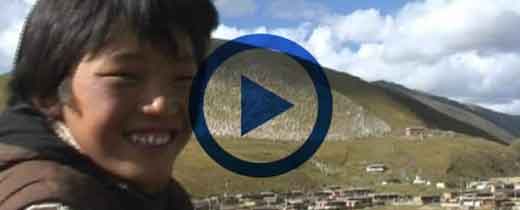
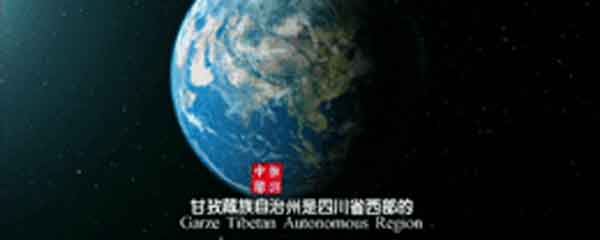
Leave a Reply